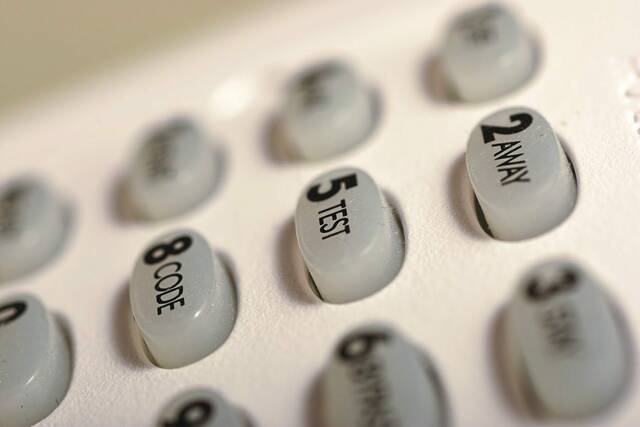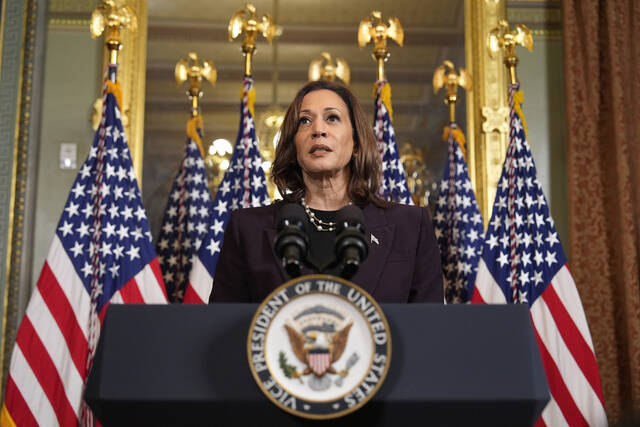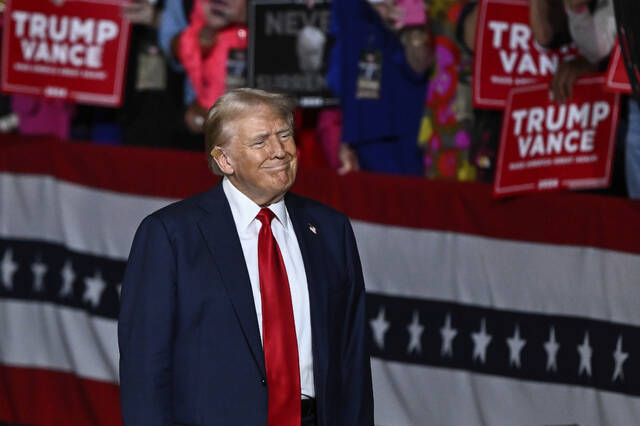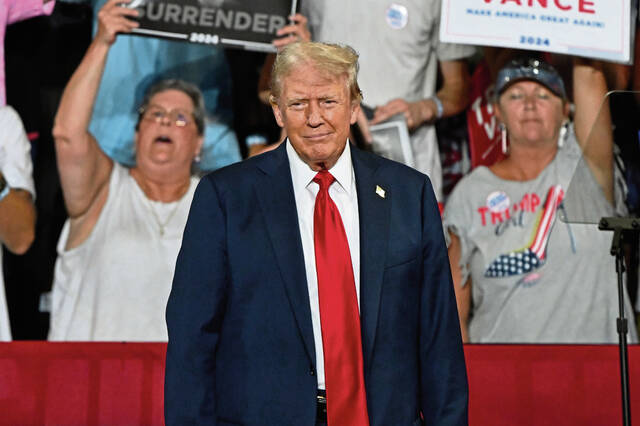Experts call for caution as rush to assess new polls in presidential race intensifies
It’s a new ballgame for pollsters.
The models, statistics, results and interpretation of public opinion gathered throughout 2024 and over the past three years was tossed out the window last weekend when President Joe Biden withdrew from the presidential race.
With the race now shifted to feature Vice President Kamala Harris as the presumptive Democratic candidate who will take on former President Donald Trump in November, pollsters have been hard at work over the past week to reassess the political reality ahead for the next three months.
The results might be different, but the process will remain the same.
“Polling serves a purpose, it gives a sense of where a race is at,” said Chris Borick, political science professor at Muhlenburg College in Allentown.
Just how much the polls will shift now that the landscape of the presidential race has been altered remains to be seen. Early results indicate Harris’ entrance may have tightened the race.
Those who conduct the surveys concede the results are only a snapshot in time and depend on how and when polling data is collected, who responds and how it is interpreted.
“On the whole, polling has been fairly good in terms of what is occurring. In 2016 and 2020, the polls largely understated Trump’s performance. In 2018 and 2022, polls had solid results. What was different was that Trump wasn’t on those ballots,” Borick said.
Polling has changed over the years. No longer is public opinion gathered strictly through random telephone calls to homes of registered voters. Pollsters now use a combination of methods including those traditional calls, but also contacts identified through various sources that are made to cellphones — via text and calls — on social media and over the internet.
Those in the business say the wider the net is cast, the better the data received — leading to a better picture of where a race stands.
“In some cases polling is really a science. It is not a certainty. There are accurate polls and some that are not very accurate,” said Alison Dagnes, Shippensburg University professor and chair of the school’s political science department.
Big business
Political polling has been become big business. Major news organizations, colleges and politically connected groups all conduct polls during election cycles. Differentiating the good polls from bad can be a challenge.
Dagnes said rating sites such as 538, the popular site founded by statistician Nate Silver and now run by ABC News, still provide comprehensive views of polling accuracy. Ratings for polling conducted by major media companies traditionally stand among the most accurate.
Partisan polls released by campaigns and other candidate-aligned organizations can skew overall aggregated results.
“People have to be dogged when they’re picking their polling sources. Confirmation bias can also make you reject certain polls,” Dagnes said.
Hundreds of pollsters are in the business, with new results released daily on national and state levels.
“When I started, there were about two to three of us doing this in Pennsylvania. Now people come in from across the country to poll in Pennsylvania,” Borick said.
The 2020 election saw 529 national voter surveys conducted by 97 pollsters, and 1,572 state-level presidential polls by 221 pollsters.
Courtney Kennedy, vice president of Methods and Innovation at Pew Research Center based in Washington, D.C., has worked as a pollster and more recently has conducted research into improving the accuracy of public opinion surveys. She said there is reason to be watchful of results this fall.
“I have confidence polling will continue to give us a good idea of what is going on right now. I am not as confident that if a race is close, we will know the winner. There are major issues in determining if polling is really good but there is a point where it is not precise enough,” Kennedy said.
Failure rates
Kennedy was part of a team that reviewed polling data for the American Association for Public Opinion Research after the 2020 Presidential Election. It found that polling leading up to that election had an inaccuracy rate that was 20% higher than previous elections.
One potential reason for the failures related to a growing number of Republicans who did not respond to the polls, according to the study.
“There are a lot of online and cheap polls that have compromised the industry. Sometimes it is difficult to put them in perspective, to do the research to see if polls came from a reputable pollster,” Kennedy said.
National polling may reflect the general position of voters throughout the United States, but state-level data is ultimately a key data point in assessing the real-world view of the race. It’s state-by-state results in November that will determine who is sworn into office Jan. 20.
State polls were less accurate than national surveys in 2020.
“Overall, there are small differences, but in recent years, state-level polls were off by an average of 5%,” Kennedy said.
Berwood Yost oversees polling for Franklin & Marshall College in Lancaster, which for years has produced overviews of political races in Pennsylvania.
Yost still bristles at how some media reports portrayed the results of polling he conducted in April.
The poll found President Joe Biden held a narrow two-point lead over former President Donald Trump, while some published accounts of the same survey reported the margin to be as high as 10 percentage points. Yost said the wider margin reflected a figure buried deep into the bowels of the overall report that discussed an unlikely scenario of a November ballot in Pennsylvania without third-party candidates.
“People need to know if there is enough information to judge what the polls really say,” Yost said. “There are a million questions you can ask that goes beyond the horse race.”
Experts said poll results can be tricky to evaluate, and there are risks in how they are interpreted.
“Our obsession with the horse race doesn’t feel completely healthy. In 2016, people got the message from the polls that the race was over and (Hilary) Clinton won. Maybe some voters didn’t go to the polls. It’s important to note that the election is not until November. Let the public do its thing,” Kennedy said.
Rich Cholodofsky is a TribLive reporter covering Westmoreland County government, politics and courts. He can be reached at rcholodofsky@triblive.com.
Remove the ads from your TribLIVE reading experience but still support the journalists who create the content with TribLIVE Ad-Free.




